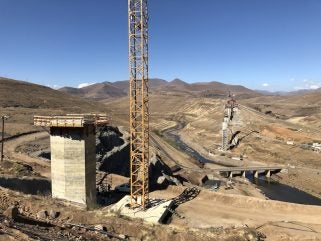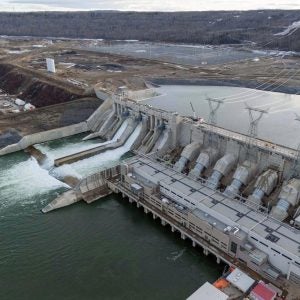
The construction of the Senqu Bridge, part of the Lesotho Highlands Water Project (LHWP) Phase II, marked a significant milestone on May 24 with the casting of the first deck segment on the northern abutment.
Spanning 825m and standing 90m high, the Senqu Bridge is the largest of three major bridges being built to cross the Polihali reservoir. It is also the first extradosed bridge in Lesotho. The design considers the harsh winter conditions in the Mokhotlong highlands.
The bridge deck is being constructed incrementally from both abutments to minimize disturbance and enhance worker safety. The deck segments are cast in 25m sections using shutter molds, then hydraulically jacked out over the gorge and connected midspan to form a continuous deck.
The Senqu Bridge construction contract, valued at approximately M2 billion, was awarded to the WRES Senqu Bridge Joint Venture in August 2022. The joint venture includes Webuild S.p.A. (Italy), Raubex Construction (South Africa), Enza Construction (South Africa), and Sigma Construction (Lesotho), with several sub-contractors from South Africa, Austria, and France.
Construction on the southern bank includes ongoing work on Piers 11 and 14, with concrete being delivered continuously to maintain progress. The cold temperatures in the Lesotho Highlands slow the concrete curing time, reducing the sliding rate of the piers.
Work on the bridge design started in 2018, led by Zutari (formerly Aurecon Lesotho). Zutari also designed the other two major bridges under Phase II, the Mabunyaneng and Khubelu bridges.
The Senqu Bridge is expected to be completed in early 2026. It is larger than the Mphorosane Bridge built during Phase I of the LHWP. The primary infrastructure projects of Phase II include the Polihali Dam and the Polihali Transfer Tunnel, which will significantly increase water transfer capacity to South Africa and enhance power generation at ‘Muela.
New roads and bridges are required to maintain access and connectivity across the reservoir. The major bridges program is complemented by the construction of four pedestrian bridges and six vehicle bridges, currently under procurement, to ensure mobility for communities in the reservoir area.






